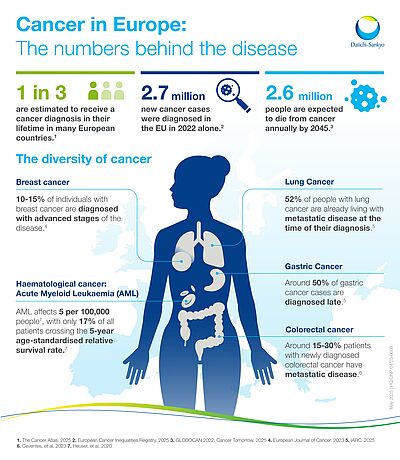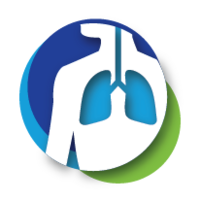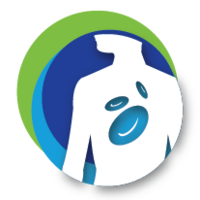Cancer touches the lives of millions across Europe – whether as patients, loved ones, caregivers, or medical professionals. In 2022 alone, an estimated 2.7 million new cancer cases were diagnosed in the EU.1 By 2045, 2.6 million people are expected to die from cancer annually.2
In many European countries, every third person is estimated to receive a cancer diagnosis in their lifetime, by the age of 75.3 At Daiichi Sankyo Europe we are dedicated to advancing cancer research and bringing innovative therapies to people with cancer.
Since 2022, Daiichi Sankyo Europe’s cancer therapies have reached more than 33,000 people in Europe, helping to expand treatment options and to support a better quality of life for those affected by cancer.4 With over 60 ongoing trials in 24 European countries across multiple types of cancer, including breast, lung, gastric, colorectal and haematological cancer5 we aim to alleviate the burden cancer has on the lives of patients.
Our Focus in Oncology: Tailoring Treatments to the Diverse Nature of Cancer.
Cancer is not just one disease; it encompasses many types, each affecting different organs or parts of the body. Each form comes with its own characteristics, treatment requirements and difficulties. A characteristic all cancer typers have in common is the uncontrollable cell growth and division, which disrupts the bodily systems and evades the natural defences.
Targeted therapies have demonstrated huge potential in recent years and have become standard treatments for many types of cancers. Innovative advancements in oncology have the ability to change the current trajectory in cancer and improve outcomes for patients.
Antibody drug conjugate (ADC) technology aims to try and strike the balance between minimising the risk of damage to healthy tissue and maximising the survival benefit for patients. However, improving the lives of patients cannot be accomplished overnight. It requires dedication and long-term commitment.
- Breast cancer is the most common cancer in Europe for women.6 The impact of breast cancer is significant, in 2022 alone, more than 144,000 people lost their lives to breast cancer, highlighting the urgent need for effective medicines.7
- There are four stages classifying breast cancer, stage I through IV, increasing in severity. Stage IV indicates that the cancer has spread beyond the breast and nearby lymph nodes to other parts of the body, making it more difficult to treat.
- The 5-year survival rate for breast cancer varies in Europe between 70 - 90% depending on the stage of disease and countries. In high-income countries, approximately 10-15% of newly diagnosed breast cancer are in the metastatic stages, with this number rising in low- and middle-income countries.8,9
- At diagnosis, important biological markers (also known as biomarkers) such as genes, proteins or other molecules on the cancer cells’ surface, can be identified to determine the subtype of tumour present in the patient to choose the most adequate course of treatment
Breast cancer biomarkers:
| HER2 | Presence or absence of human epidermal growth factor with different intensity of human epidermal growth factor 2 (HER2- / HER2+) |
| Hormone receptors | Presence or absence of hormone receptors (HR positive (+)/ HR negative (-)) Relevant hormones: oestrogen or progesterone |
| The absence of the receptors for oestrogen, progesterone and HER2: TNBC | |
| Other biomarkers | Potential cancer causing gene variants like BRCA1 and BRCA2 |
- Breast cancer treatment typically depends on the type and stage of the disease, often including surgery to remove the tumour and medication.
Breast cancer stages:
| Stage I to III | Surgery and radiotherapy - often along with chemo- or other drug therapies either before (neoadjuvant) or after (adjuvant) surgery |
| Stage IV | Systemic therapy |
- Gastric cancer, also known as stomach cancer, affects the stomach tissue. In Europe, it’s the ninth most common cancer and contributes to 3% of all new cancer cases.10 It is estimated that in 2022 there were over 135,000 new cases of gastric cancer, and 95,000 patients died from the disease.7
- Around 50% of gastric cancer cases are diagnosed late11 – only once the cancer has spread to other organs, also called metastatic state. The use of different biomarkers and the existing targeted combination therapies can determine the most suitable course of treatments.12
- Lung cancer is the leading cause of cancer death among men and women and accounts for 10.8% of new cancer cases. 10 In 2022 alone, there were over 484,000 new cases of lung cancer in Europe.7 Almost every second patient (52%) with lung cancer is already living with metastatic disease at the time of their diagnosis.11
- Multiple biomarkers are associated with lung cancer and are key to classifying and determining the best treatment.13
Lung cancer biomarkers:
| EGFR | Mutations in epidermal growth factor receptors (EGFR). Activation of the tyrosine kinase domain |
| ALK (anaplastic lymphoma kinase) | Gene rearrangements creating abnormal proteins driving cancer growth |
| ROS1 | Receptor tyrosine kinase gene that can form oncogenic fusions |
| BRAF V600 | Mutations are oncogenic drivers |
| RET | Gene that can form oncogenic fusions |
| NTRK | Gene that can form oncogenic fusions |
| HER2 | Mutations are oncogenic drivers |
| MET | Mutations are oncogenic drivers |
| KRAS | Mutations to the KRAS oncogene dysregulate cell signalling pathways |
- Colorectal cancer affects the large intestine (colon) and rectum and is the third most common cancer in Europe.6
- Around 15-30% of patients with newly diagnosed colorectal cancer have metastatic disease, meaning the cancer has spread from the primary site of origin to different areas of the body.14 Up to half of colorectal cancer patients may eventually develop metastatic disease.14
- The most common treatment for colorectal cancer when the cancer has not spread, is to undergo surgery to remove the tumour. If the cancer has spread, patients are typically prescribed chemotherapy and/or targeted therapy.14
Haematological cancer: Acute Myeloid Leukaemia
- Leukaemia is a type of blood cancer that affects the white blood cells, which are essential to our immune system. Acute leukaemia means it progresses quickly and aggressively - usually requiring immediate treatment. Acute myeloid leukaemia (AML) is an aggressive cancer of the myeloid cells, a type of white blood cell. This type of cancer is rarer, accounting for a small proportion of all new cancer cases, given an incidence rate 5.06 per 100,000 people in Europe.15 However, it has a low five-year survival rate of only 17%.15
- There are no effective screening tests for early detection of AML. Testing is usually initiated based on symptoms.15
- Chemotherapy remains the first line treatment for AML.15
- Targeted therapies and immunotherapies are an important development for AML patients. The first targeted therapy for AML, available since 2017, offers more effective treatment including improved survival outcomes and lower chances of relapse.16
The diversity and complexity of these different types of cancer highlight the urgent need for innovative and more effective therapies. Each of these cancers presents its unique challenges to existing therapies, from rapid progression to late diagnosis or to resistance. This shows that more targeted and effective medicines are essential.
Advancing Oncology: Current Research and our Pipeline

At Daiichi Sankyo Europe, we understand that advancing research and developing new therapies is crucial to improving patient outcomes. Hence, our oncology pipeline is dedicated to investigating the difficult-to-treat indications and addressing the needs of cancer patients and healthcare systems to improve standards of care in oncology. With our 2025 vision to become a ‘Global Pharma Innovator with Competitive Advantage in Oncology,’ we are committed to expanding our treatment options to continuously better support those affected by cancer.
Our robust pipeline has over 20 novel compounds in development across multiple types of cancer, including breast, lung, gastric, ovarian, prostate and blood cancers. We are progressing in drug discovery and development in a wide range of modalities beyond ADCs, including nucleic acid and gene therapy.
References
- European Cancer Inequalities Registry. EU country Cancer Profiles Synthesis Report 2025 [Accessed February 2025]
- GLOBOCAN 2022. Cancer Tomorrow [Accessed March 2025]
- The Cancer Atlas. The Burden, Europe [Accessed February 2025]
- ENHERTU monthly performance tracking, AF1’24
- Europe Head Regional Site Engagement Management • Global Clinical Operations
- ECIS. European Cancer Information System [Accessed February 2025]
- GLOBOCAN 2022. Cancer Today [Accessed February 2025]
- Cardoso, et al. European Journal of Cancer. 2023;183(105-113)
- European Cancer Information System. Breast Cancer Burden. [Accessed May 2025]
- GLOBOCAN 2022. Cancer Today Europe Factsheet [Accessed May 2025]
- IARC. ICBP-SURVMARK2. [Accessed February 2025]
- Lordick F, et al. Annals of Oncology. 2022;33(10)
- Hendriks L E, et al. Annals of Oncology. 2023;34(4)
- Cervantes, et al. Annals of Oncology. 2023;34(10-32)
- Heuser, et al. Annals of Oncology. 2020;31(697-712)
- Stone, et al. Blood. 2024;144(218)








